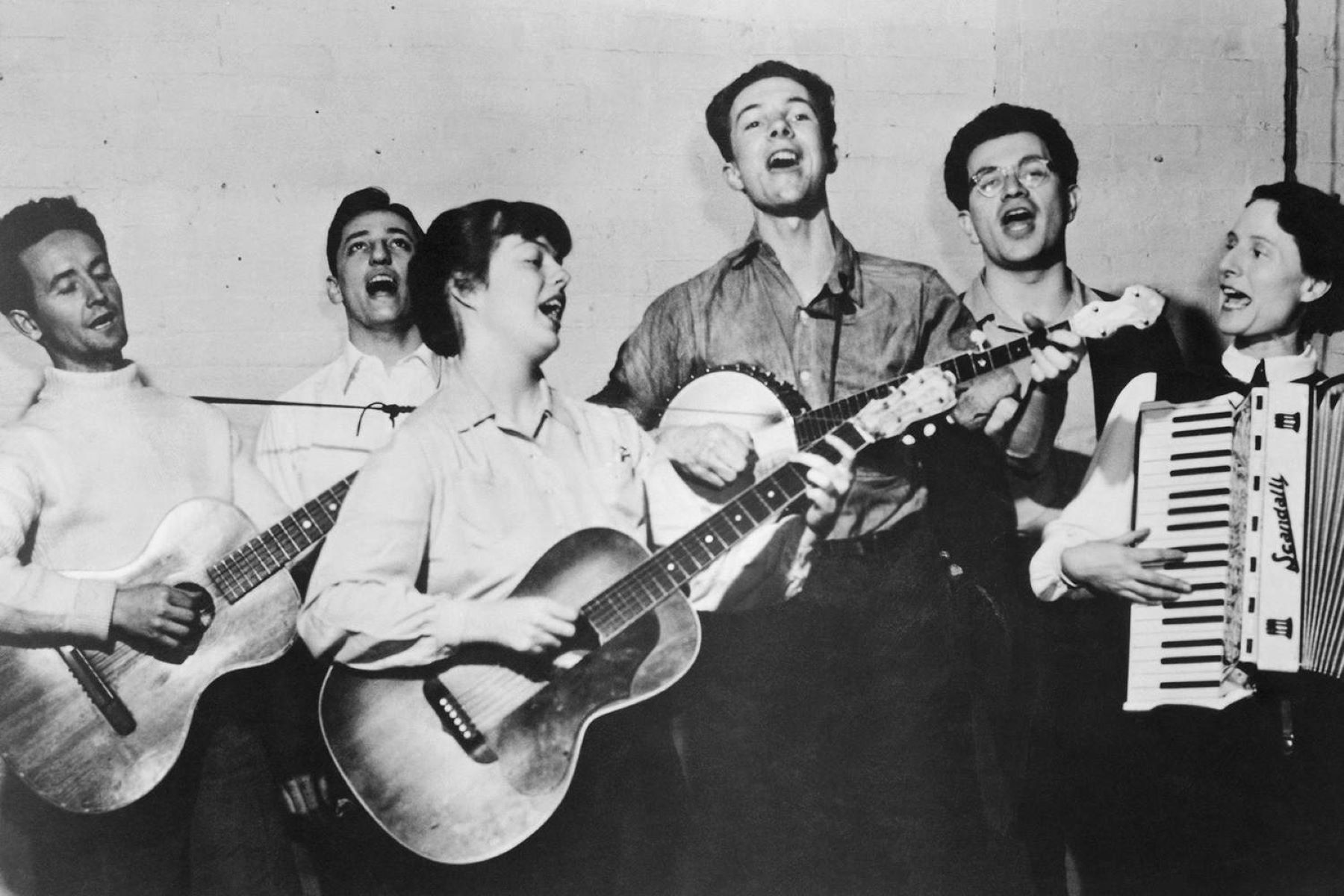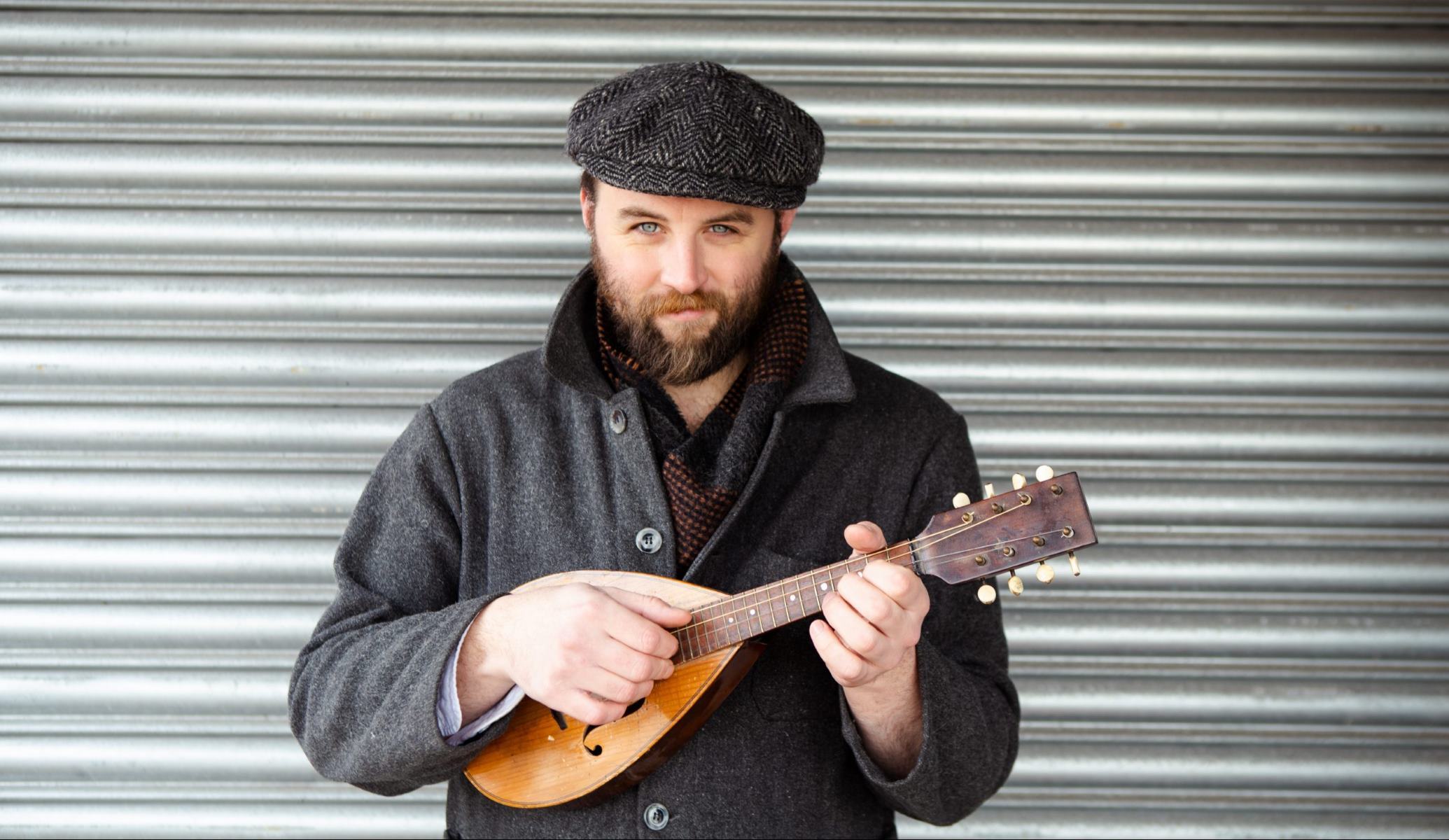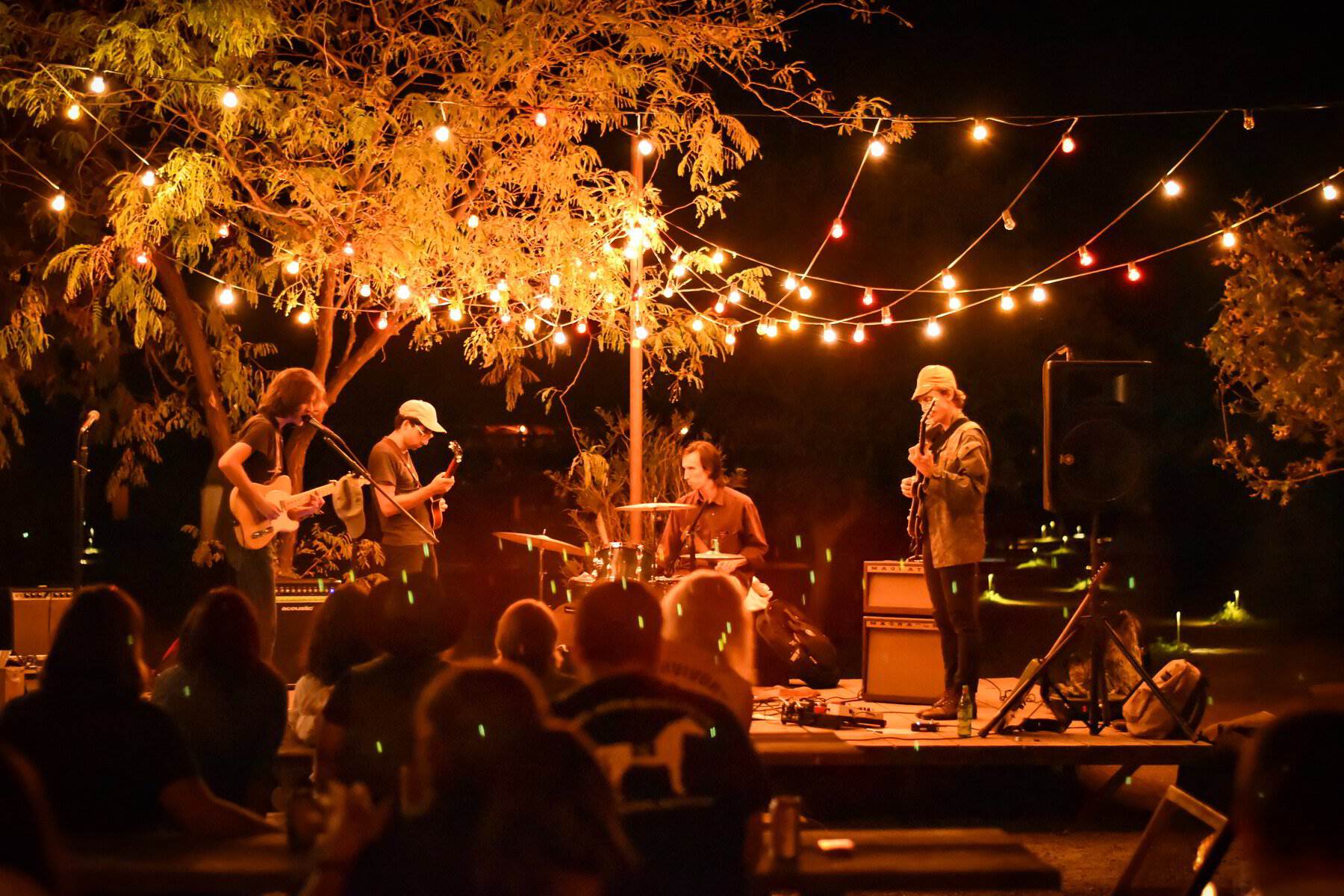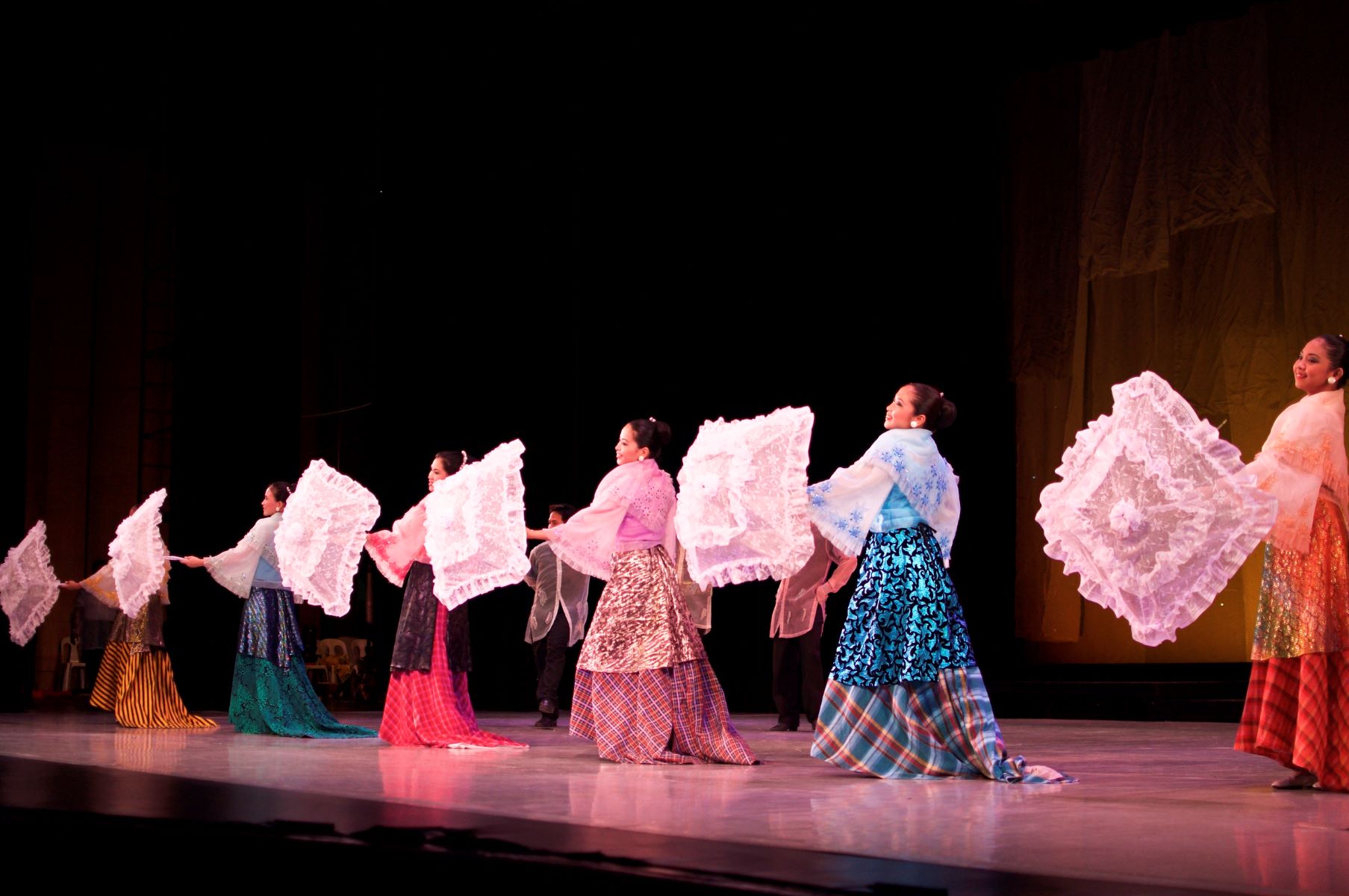

Folk
What Is American Folk Music
Modified: February 15, 2024
Discover the rich history and diversity of American folk music, from traditional ballads and protest songs to contemporary folk artists. Explore the roots of this beloved genre and its enduring impact on the American musical landscape.
(Many of the links in this article redirect to a specific reviewed product. Your purchase of these products through affiliate links helps to generate commission for AudioLover.com, at no extra cost. Learn more)
Table of Contents
Introduction
American folk music, deeply rooted in the cultural heritage of the United States, is a genre that has captivated audiences for centuries. With its origins dating back to the early settlements of the country, folk music has evolved and thrived, resonating with people from all walks of life. This unique musical tradition reflects the stories, struggles, and celebrations of the American people, serving as a powerful medium of expression and a testament to the rich diversity of the nation.
At its core, American folk music is characterized by its simplicity, honesty, and authenticity. It tells tales of love, loss, work, and community, offering a glimpse into the lives and experiences of everyday individuals. What sets folk music apart is its ability to transcend time and connect generations, as people continue to draw inspiration and find solace in its melodies and lyrics.
The term “folk music” encompasses a wide range of subgenres, including traditional folk, contemporary folk, protest folk, and many more. Each subgenre carries its own unique style and message, providing a glimpse into the socio-cultural, political, and historical contexts in which they originated.
Whether it’s the sweet melodies of a Appalachian ballad, the fiery lyrics of a protest song from the Civil Rights Movement, or the nostalgic tunes of a Woody Guthrie classic, the power of American folk music lies in its ability to evoke deep emotions and foster a sense of connection.
In this article, we will delve into the rich history and origins of American folk music, explore its key characteristics, discuss the musical instruments commonly used, trace its major influences and evolution, examine regional styles, highlight notable folk artists, and even touch upon the contemporary folk music scene. By the end, you will have a comprehensive understanding of the cultural significance and enduring legacy of American folk music.
History and Origins
The roots of American folk music can be traced back to the early European settlements in North America, particularly during the colonial period. Immigrants from various countries, including England, Ireland, Scotland, and Africa, brought their unique musical traditions, which served as the foundation for the development of folk music on American soil.
During the 17th and 18th centuries, colonists utilized music as a means of preserving their cultural identities and maintaining a sense of community in the New World. Folk songs were often passed down orally from generation to generation, telling stories of everyday life, family, and local lore.
As the United States continued to expand, so did the influence and diversity of folk music. The 19th century marked a period of significant social and cultural change, with the rise of industrialization, westward expansion, and the abolitionist movement. These transformative forces greatly impacted the content and themes of folk songs, reflecting the experiences and struggles of the time.
During the early 20th century, folk music gained increasing popularity through the efforts of folklorists and collectors like John and Alan Lomax, who traveled the country recording and preserving traditional songs. The Great Depression and the Dust Bowl era further elevated the prominence of folk music, as it provided solace and a way for people to express their hardships and aspirations.
The folk revival movement of the 1950s and 1960s brought folk music to the forefront of American popular culture. Artists such as Pete Seeger, Joan Baez, and Bob Dylan used their music as a platform to address political and social issues, including civil rights, war, and injustice. This era saw a blending of traditional folk music with contemporary influences, giving birth to a new wave of protest folk.
Today, American folk music continues to evolve and adapt, embracing new themes and influences while remaining firmly rooted in its historical and cultural foundations. It continues to be celebrated and appreciated by artists and listeners alike, serving as a testament to the enduring power and relevance of this extraordinary musical genre.
Key Characteristics
American folk music is characterized by several key elements that distinguish it from other genres. These characteristics contribute to its unique sound and emotional resonance:
- Simplicity: Folk music is marked by its simplicity in melody, harmony, and structure. The tunes are often straightforward and easy to learn, making them accessible to a wide range of musicians and listeners.
- Lyrical storytelling: One of the defining features of folk music is its focus on storytelling through lyrics. The songs often tell personal narratives, recount historical events, or convey social and political messages, providing insights into the human experience.
- Oral tradition: Folk music has a strong oral tradition, meaning that songs are passed down through generations by word of mouth. This has resulted in variations and adaptations of songs over time, reflecting different regions and communities.
- Community and participation: Folk music is deeply connected to community and participation. It often brings people together, creating a sense of shared experience and communal expression.
- Social commentary: Folk music has a long history of providing social commentary and addressing important issues. From songs of protest and political activism to songs that shed light on social injustices, folk music has been used as a platform for expressing dissent and advocating for change.
- Acoustic instrumentation: Traditional folk music typically features acoustic instruments, such as the acoustic guitar, banjo, fiddle, mandolin, and harmonica. These instruments contribute to the warm and organic sound associated with the genre.
It’s important to note that though these characteristics are common in folk music, there is also a wide variety within the genre. Different subgenres and regional styles may emphasize certain elements more than others, leading to a diverse range of sounds and expressions.
Overall, American folk music encapsulates the essence of storytelling, community, and cultural heritage. Its simple yet powerful melodies and lyrics have resonated with generations, making it an enduring and cherished genre of music.
Musical Instruments Used
One of the distinguishing features of American folk music is the wide array of musical instruments used to create its distinctive sound. These instruments play a crucial role in shaping the melodies and rhythms that define the genre. While different subgenres and regional styles may have specific instrument preferences, there are several instruments commonly associated with folk music:
- Acoustic Guitar: The acoustic guitar is perhaps the most iconic instrument in folk music. Its versatility and portability make it a popular choice among folk musicians. The guitar provides both rhythm and melody, allowing performers to accompany themselves while singing.
- Banjo: The banjo is a signature instrument in folk and traditional music, particularly in genres like bluegrass and Appalachian folk. Its distinctive twangy sound adds a lively and upbeat element to folk performances.
- Fiddle: The fiddle, also known as the violin, has a long-standing history in folk music. Its expressive and melodic capabilities make it a versatile instrument, used to create soulful and evocative melodies in various regional styles of folk music.
- Mandolin: The mandolin, with its bright and crisp tones, contributes a distinctive flavor to folk music. It is often played in genres such as bluegrass and Irish folk, adding a layer of intricate melodies and harmonies.
- Harmonica: The harmonica, also known as the mouth organ, is a portable and expressive instrument frequently utilized in folk music. Its unique sound can evoke a sense of nostalgia and adds a soulful, bluesy quality to performances.
- Accordion: While primarily associated with European folk music, the accordion has found its place in American folk music as well. Its rich and versatile sound adds depth and texture to folk performances.
- Dulcimer: The dulcimer is a string instrument commonly associated with Appalachian folk music. Its unique sound and simplicity make it a favorite among folk musicians in that region.
- Autoharp: The autoharp, a multi-stringed instrument, is often used to accompany folk songs. It provides a full and resonant sound that enhances the overall texture of a performance.
These are just a few examples of the many instruments used in American folk music. It’s worth noting that folk musicians are known for their ability to blend and experiment with different instruments, often incorporating unconventional or homemade instruments to create distinct sounds and textures.
Regardless of the specific instruments used, the key characteristic of American folk music lies in the use of acoustic instruments that accentuate the raw and organic nature of the genre.
Major Influences and Evolution
American folk music has been shaped by various influences throughout its rich history, resulting in its diverse and ever-evolving nature. From the early settlers to the modern era, here are some of the major influences that have contributed to the development of this genre:
- Indigenous Music: The indigenous peoples of North America had a profound impact on American folk music. Their chants, dances, and musical traditions laid the foundation for many aspects of folk music, influencing rhythms, melodies, and even the use of certain instruments.
- African Music: Due to the transatlantic slave trade, African musical traditions infused with American folk music, particularly in genres like blues, gospel, and work songs. Elements such as call-and-response, syncopated rhythms, and expressive vocal styles became integral to the genre’s evolution.
- European Folk Music: The traditional music brought by European settlers, such as British and Irish folk music, heavily influenced American folk music. These influences can be heard in the lyrics, melodies, and instruments used in different regional styles of American folk music.
- Cultural Movements: Social and cultural movements, such as the labor movement, civil rights movement, and the counterculture of the 1960s, significantly shaped the lyrics and themes of American folk music. Folk artists used their music as a vehicle for activism and social commentary, advocating for justice and equality.
- Popularity & Commercialization: The folk revival of the 1950s and 1960s brought folk music to the mainstream, leading to its commercialization and integration into popular culture. This period saw the emergence of influential folk musicians like Woody Guthrie, Bob Dylan, and Joan Baez, who expanded the genre’s boundaries and broadened its appeal.
As American folk music has evolved, it has also assimilated influences from other genres, including country, rock, and even punk. This cross-pollination has created subgenres like folk-rock, alternative folk, and indie folk, bringing new sounds and perspectives to the tradition.
Additionally, regional styles have developed throughout the United States, each reflecting the unique cultural and historical backgrounds of their respective areas. Whether it’s the Appalachian ballads of the Southeast, the sea shanties of the East Coast, or the cowboy songs of the American West, these regional styles offer distinct flavors within the broader genre of American folk music.
The evolution of American folk music continues in the contemporary music landscape with artists blending traditional elements with modern influences, embracing innovation while staying true to the roots of the genre. This ongoing evolution ensures that folk music remains a vibrant and relevant force in the musical landscape, continuing to capture the spirit of American culture.
Regional Styles
American folk music is richly diverse, with each region of the United States contributing its own unique style and sound. These regional styles reflect the cultural heritage, history, and traditions of the respective areas. Here are some prominent regional styles of American folk music:
- Appalachian Folk: Appalachia, a mountainous region spanning multiple states, is known for its distinctive folk music. Appalachian folk, influenced by Scottish, Irish, and English traditions, often features plaintive ballads, lively fiddle tunes, and intricate banjo picking.
- Bluegrass: Originating in the hills of Kentucky, bluegrass is a high-energy subgenre of folk music characterized by tight vocal harmonies, virtuosic instrumentals, and fast-paced banjo and mandolin picking. It developed in the 1940s and has become an iconic style within American folk music.
- Cajun and Zydeco: Hailing from Louisiana, Cajun and Zydeco music blend French, African, and Creole influences. With accordion and fiddle as prominent instruments, these genres bring lively dance rhythms, heartfelt vocals, and a distinct cultural flavor to the folk music landscape.
- Gospel and Spirituals: Born out of African American religious communities, gospel and spirituals are powerful expressions of faith and resilience. These genres incorporate call-and-response singing, soulful harmonies, and energetic rhythms, contributing to the rich tapestry of American folk music.
- Sea Shanties: With its roots in maritime culture, sea shanties are work songs sung by sailors during their labor. These songs often feature robust, communal singing, reflecting the rhythms and challenges of life at sea. They are associated with coastal regions and ports along the East Coast.
- Texas Folk and Country: Texas has its own distinctive folk and country music traditions. Influenced by Mexican and Western swing styles, Texas folk and country feature heartfelt storytelling, twangy guitar, and fiddle-driven melodies that pay homage to the state’s rich musical heritage.
These regional styles represent just a fraction of the wealth of folk music traditions found across the United States. As folk musicians migrated and interacted with different cultures and communities, regional styles continued to evolve and intersect, resulting in a vibrant tapestry of sounds and influences.
Each regional style carries the spirit and essence of its respective region, reflecting the unique histories, landscapes, and cultural identities of the people who call those areas home. Through these regional styles, American folk music celebrates the diverse heritage and shared experiences of the nation.
Notable Folk Artists
American folk music has been shaped by numerous talented and influential artists who have left an indelible mark on the genre. From the early pioneers to modern icons, here are some notable folk artists who have made significant contributions:
- Woody Guthrie: Known as the “Dust Bowl Troubadour,” Woody Guthrie was a prolific songwriter and activist whose poignant lyrics addressed the struggles of the working class. His iconic songs like “This Land Is Your Land” and “Pastures of Plenty” continue to resonate and inspire today.
- Joan Baez: A key figure during the folk revival of the 1960s, Joan Baez’s powerful voice and passionate performances made her a prominent voice for social justice. Her renditions of traditional ballads and her involvement in civil rights and anti-war movements solidified her status as a folk music legend.
- Bob Dylan: Bob Dylan’s groundbreaking songwriting and poetic lyrics have made him one of the most influential figures in American music history. From his early protest songs to his evolution as a rock-folk hybrid, Dylan’s impact on the folk genre and popular culture is immeasurable.
- Pete Seeger: Pete Seeger was a renowned folk singer, songwriter, and activist who used his music as a tool for political change. His contributions to American folk music include classics like “If I Had a Hammer” and “Where Have All the Flowers Gone.”
- Lead Belly: Huddie “Lead Belly” Ledbetter was an influential folk and blues musician, known for his powerful voice and virtuosic guitar playing. His songs, such as “Goodnight, Irene” and “Midnight Special,” became staples of the folk music canon.
- Elizabeth Cotten: Elizabeth Cotten, an African American guitarist and songwriter, is revered for her unique fingerpicking style and her timeless composition “Freight Train.” Her contributions to folk music helped pave the way for future generations of artists.
- Joni Mitchell: Joni Mitchell’s introspective songwriting and distinctive voice helped redefine folk music in the 1960s and beyond. Her songs, such as “Both Sides Now” and “Big Yellow Taxi,” showcase her poetic observations and musical innovation.
These artists represent just a fraction of the talented individuals who have shaped the folk music landscape in the United States. Their contributions have not only influenced the genre but have also inspired countless musicians and continue to resonate with audiences worldwide.
It’s important to recognize that there are countless other notable folk artists, both past and present, who have enriched the genre with their unique voices and contributions. Their collective creativity and dedication have helped ensure the enduring legacy of American folk music.
Contemporary Folk Music
Contemporary folk music encompasses the vibrant and ever-evolving landscape of folk music in the present day. While rooted in tradition, it embraces modern influences and reflects the diverse voices and experiences of today’s artists. Here are some key aspects of contemporary folk music:
Genre Blending and Experimentation: Contemporary folk musicians often blend elements from various genres, including rock, pop, indie, and world music, creating a unique and eclectic sound. They experiment with different musical styles, instrumentation, and production techniques, adding layers of innovation to the folk tradition.
Social and Political Commentary: In the rich tradition of folk music, contemporary folk artists continue to use their music as a vehicle for social and political commentary. They tackle issues such as environmentalism, identity, inequality, and human rights, echoing the tradition of protest folk songs from the past.
Storytelling and Personal Narratives: Like their predecessors, contemporary folk artists excel in storytelling through their lyrics. They share personal narratives, exploring themes of love, loss, resilience, and the human experience. Their authentic and introspective approach invites listeners to connect on a deeper level.
Female Voices in Folk: The contemporary folk scene has seen a rise in powerful female voices. Women artists like Margo Price, Rhiannon Giddens, and Courtney Barnett have brought fresh perspectives and narratives to the genre, challenging traditional norms and amplifying diverse voices.
Folk Revival Movements: Revival movements within the contemporary folk scene, such as the “new folk” movement and the emergence of folk music festivals, have breathed new life into the genre. These movements foster a sense of community, providing a platform for emerging artists and celebrating the enduring spirit of folk music.
Regional and Cultural Diversity: Contemporary folk music also embraces the cultural diversity that characterizes America. Artists draw inspiration from their unique regional and cultural backgrounds, infusing folk music with flavors of various traditions and creating a tapestry of sounds and perspectives.
Contemporary folk music acts as a bridge between the past and the present, honoring the rich traditions while embracing new sounds and perspectives. Through its innovation and continued relevance, contemporary folk music ensures that the genre remains a vibrant and vital part of the musical landscape.
Impact and Legacy
American folk music has had a profound impact on both the musical world and the broader cultural landscape. Its legacy can be seen in various aspects of society, and its influence continues to resonate with audiences around the world. Here are some key dimensions of the impact and legacy of American folk music:
Cultural Preservation: Folk music serves as a vehicle for preserving cultural heritage and traditions. Through its songs and stories, folk music keeps alive the histories, customs, and values of different communities and generations, providing a link to the past and an appreciation for diverse cultural expressions.
Social and Political Movements: Folk music holds a deep connection to social and political movements. From the labor movement and civil rights struggle to anti-war protests and environmental activism, folk music has been a rallying cry, inspiring unity, fostering resistance, and advocating for justice. It has the power to ignite passion, raise awareness, and challenge the status quo.
Influence on Popular Music: American folk music has had a significant influence on various genres, including country, rock, blues, and even pop music. Artists like Bob Dylan, Joni Mitchell, and Simon & Garfunkel have incorporated folk elements into their music, shaping the course of popular music and inspiring future generations of artists.
Emotional Resonance: Folk music speaks to the human experience in a profound and emotive way. Its honest and introspective nature provides a platform for personal reflection, fostering empathy, and connecting people across time and cultures. The timeless themes embedded in folk songs continue to resonate with listeners, providing solace, inspiration, and a sense of shared humanity.
Musical Diversity and Innovation: The legacy of American folk music is characterized by its musical diversity and innovation. From traditional ballads to contemporary fusion, folk music continually evolves, embracing new sounds, instrumentations, and lyrical approaches. This adaptability ensures the genre’s relevance and appeal to new generations of listeners and musicians.
Community and Collaboration: Folk music has a strong sense of community, fostering collaboration and collective creativity. Folk musicians often come together in festivals, workshops, and jam sessions, sharing their knowledge and passion, and building a supportive network. This sense of community extends beyond the music itself, strengthening social and cultural bonds.
The impact and legacy of American folk music are undeniable. It continues to inspire, educate, and entertain, offering a window into the diverse stories and experiences of the American people. By connecting past and present, fostering social consciousness, and celebrating the richness of human expression, folk music remains an enduring and cherished part of our cultural heritage.
Conclusion
American folk music, with its deep roots and diverse influences, holds a special place in the cultural fabric of the United States. From its humble beginnings in early settlements to its modern-day resurgence, folk music has touched the hearts and souls of people from all walks of life.
Throughout its history, American folk music has served as a vessel for storytelling, community building, social commentary, and cultural preservation. Its simplicity, authenticity, and timeless themes have resonated with generations, providing a voice for the marginalized and a reflection of the collective human experience.
The artists who have contributed to the world of folk music, from the pioneers of the past to the contemporary trailblazers of today, have left an indelible mark on both the genre and the broader musical landscape. Their songs have soundtracked our lives, inspired movements, and shaped the course of popular music, making an enduring impact on society as a whole.
American folk music’s legacy lies not only in its influence on other genres or its impact on cultural and social movements, but also in its ability to unite people. It transcends boundaries, bridging divides of age, race, and class, and reminding us of our shared humanity.
As we continue to navigate an ever-changing world, the enduring relevance and power of American folk music remind us of the importance of preserving traditions, honoring our roots, and celebrating the diversity of our nation. It encourages us to listen, to learn, and to engage with the stories and experiences of others.
Whether it’s the haunting melodies of a traditional ballad, the heartfelt narratives of a protest song, or the innovative sounds of a contemporary folk artist, American folk music offers a timeless and enduring beauty. It invites us to reflect, to question, and to find solace in the melodies that have woven their way into the fabric of our lives.
So let us raise our voices and strum our instruments, keeping the spirit of American folk music alive. Let us honor the past, embrace the present, and pave the way for future generations to find inspiration and comfort in this extraordinary musical tradition.











